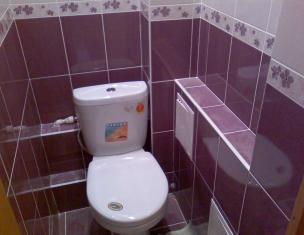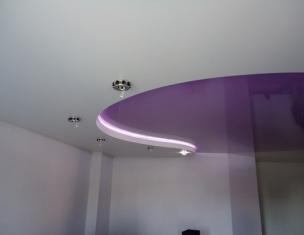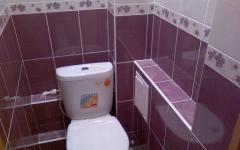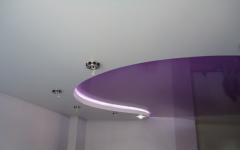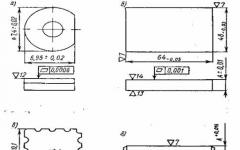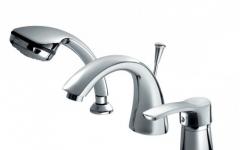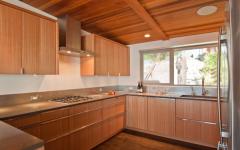Most people believe that the design of a bathroom begins and ends with the choice of finishing material and its color scheme. In fact, this is a broader concept.
A complete design project, which forms the basis of the renovation, includes electrical wiring, water supply and sewerage diagrams, taking into account the location of plumbing fixtures. Only after this on paper or in a computer program down to the accessories. All stages are interconnected, the result should be a harmonious picture of the future renovation: beautiful, comfortable, functional.
Bathroom design: principles of planning and zoning
There is such a thing as a “functional zone”, which is integrally associated with planning. Plumbing fixtures are placed in such a way that they are as separate as possible from each other, and there is at least a little free space in front and on the sides for convenient use.
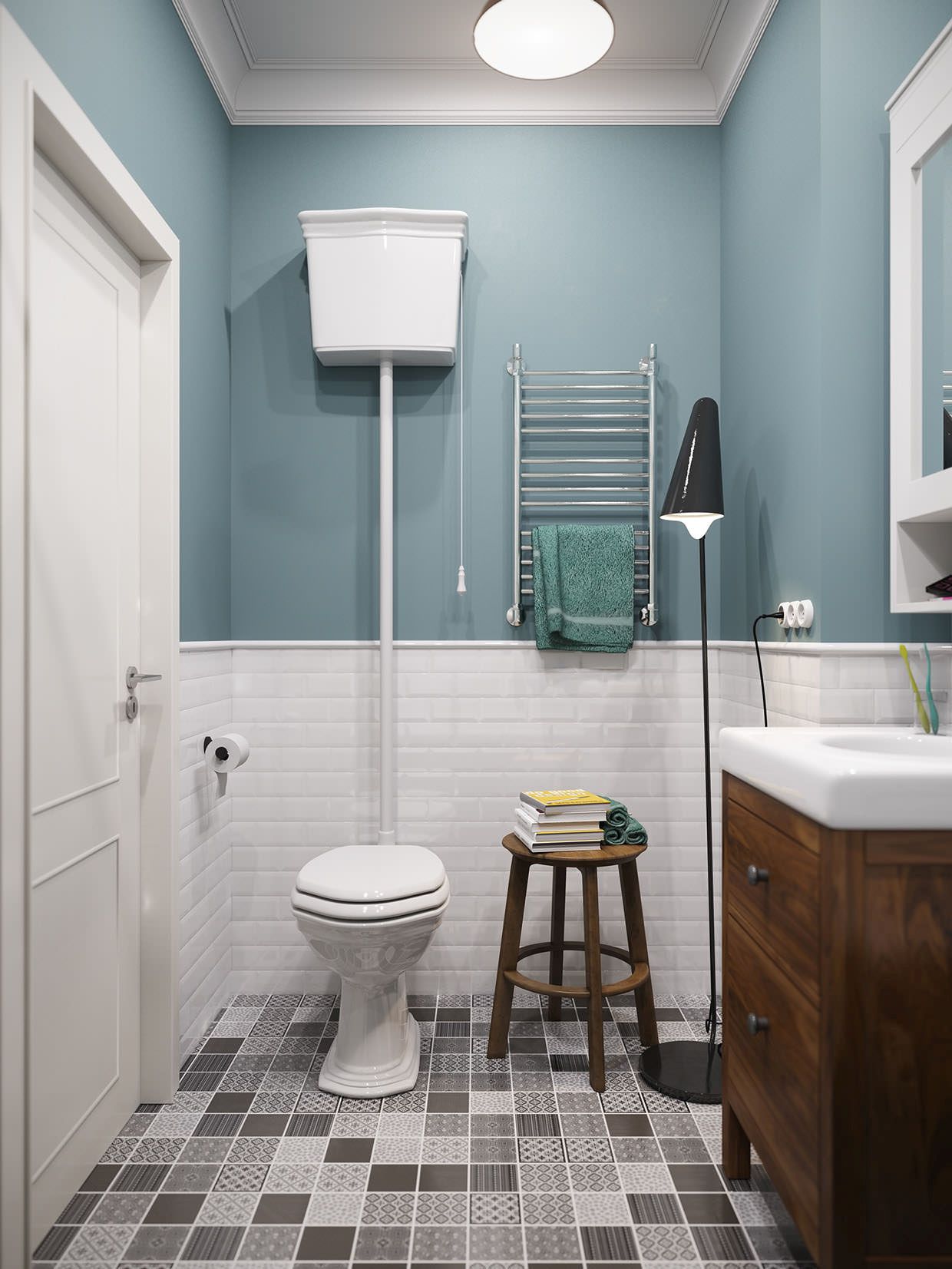
If desired, individual zones can be distinguished: combinations of textures are used, color accents are made, and partitions are installed. In a combined bathroom there should be at least three work areas:
- Sink area;
- Toilet areas;
- Shower/bath area.
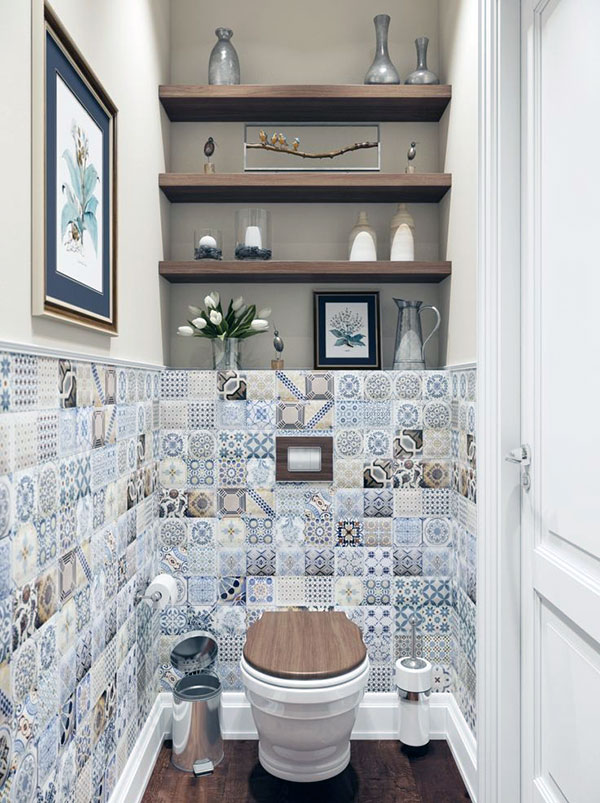
The starting point of the layout is the sewer riser. The farther the plumbing is installed from it, the more pipes will have to be laid, maintaining the slope necessary for drainage. In practice, a toilet bowl 2-3 meters away from the riser will have to be raised onto a podium to ensure normal water drainage.
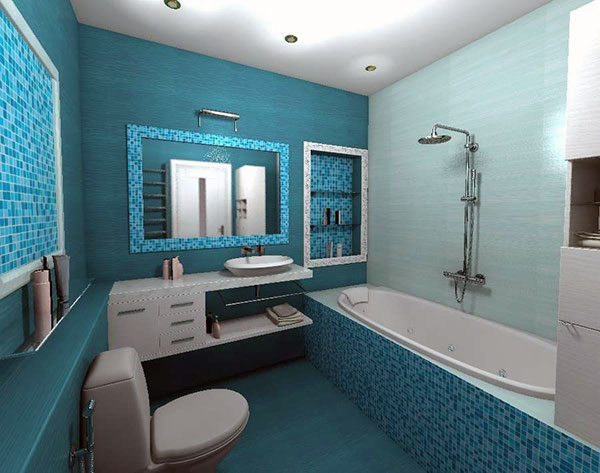
There are two main ways to arrange plumbing fixtures:
- Linear – involves parallel placement of elements, often opposite each other;
- Radial - plumbing fixtures are placed around the perimeter.
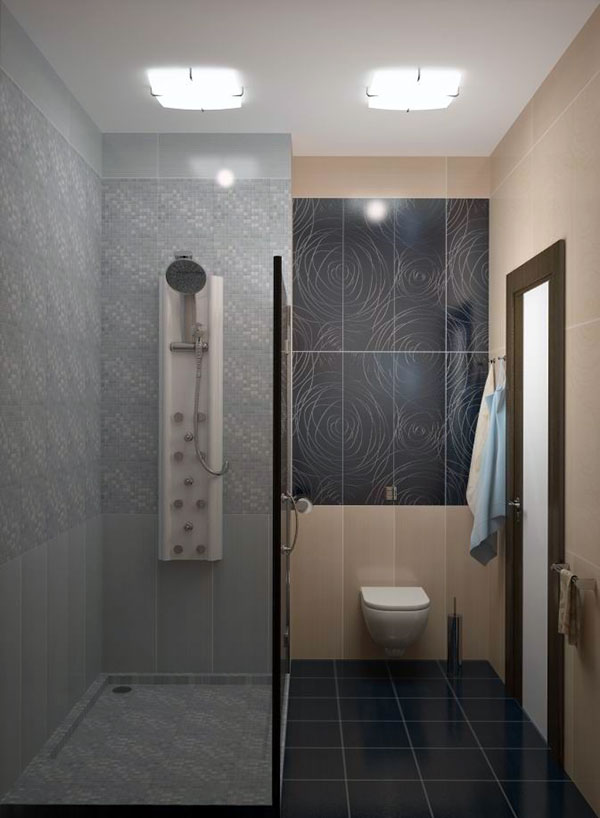
The complete design of a combined bathroom consists of little things, not least of which are accessories: faucets, shelves, towel hooks, stands, soap dishes, towel holders, toilet paper holder, and much more. It is recommended to place accessories according to the arm's length rule. That is, everything that may be needed, for example, near the washbasin should be no further than 70 cm.
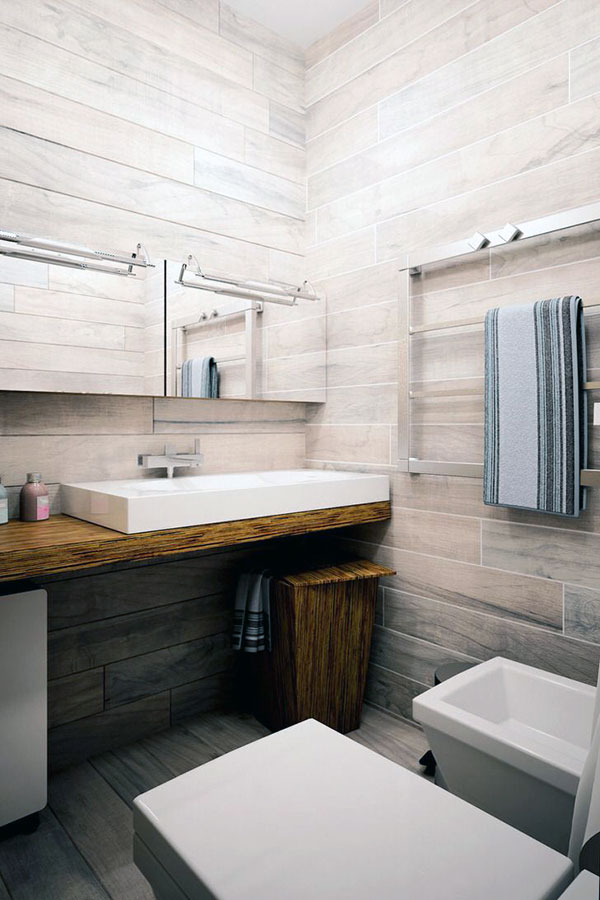
Selection of plumbing
All plumbing fixtures must be compatible with each other. Stylistics, material and shape are of primary importance. The dimensions of the products often dictate the small dimensions of the room. Fortunately, the modern market offers many options that allow you to make the most economical use of space without sacrificing quality or convenience.
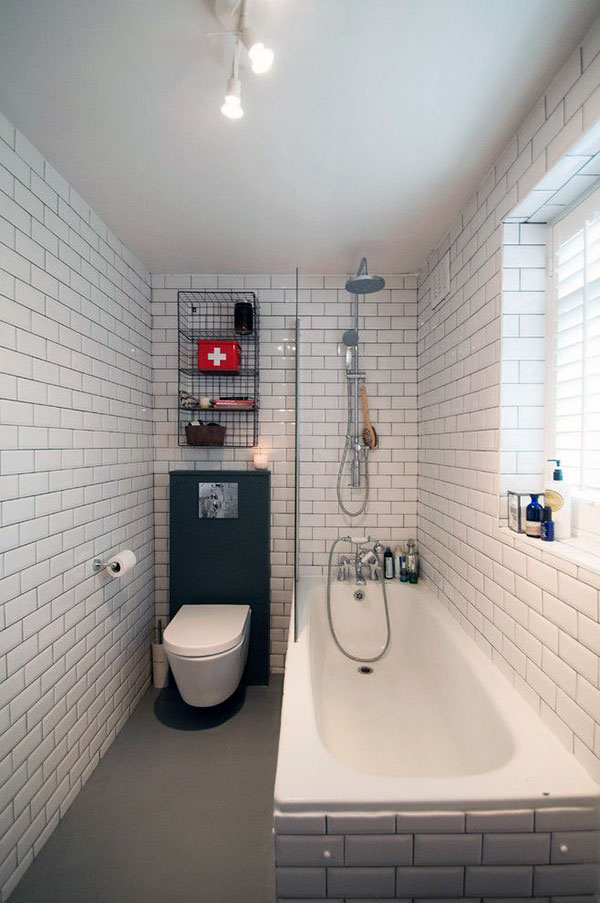
For small rooms, it is preferable to choose built-in, wall-hung or corner plumbing fixtures. At the same time, the physique of the guests is taken into account. A very tall man will probably be uncomfortable in a one and a half meter bathtub, and large people will be uncomfortable in a small shower.
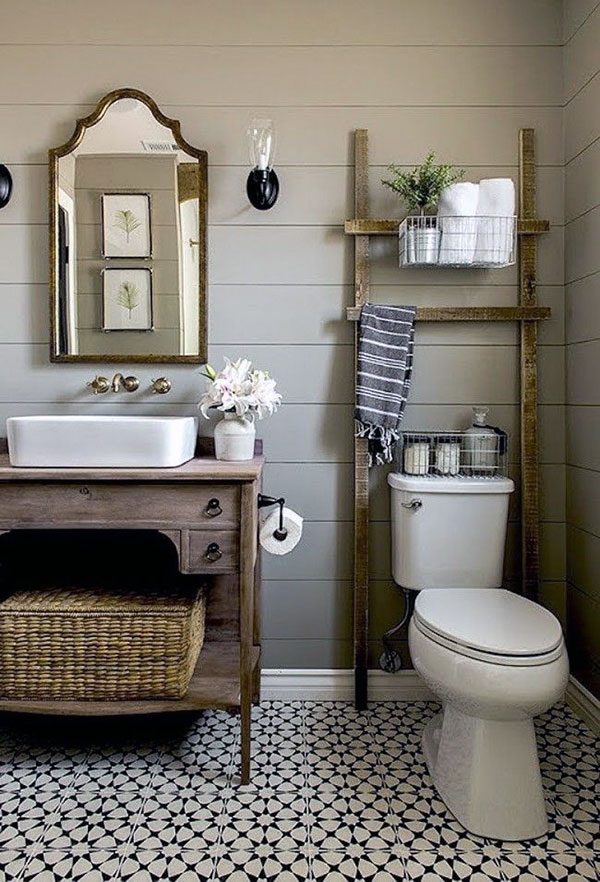
Pay attention to the size of the washbasin. Of course, you want to save money, but a very small sink is not always the best option. If you plan to install a washing machine under the sink, you should give preference to a model with a siphon moved back.
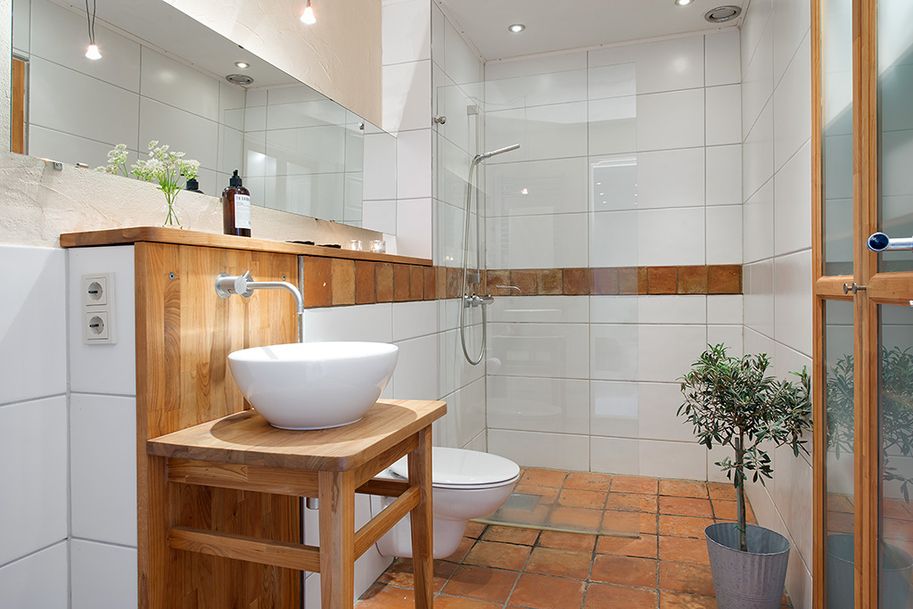
Choosing a color palette
The choice of color in the interior is influenced by personal preferences, but other important factors are also taken into account:
- Light colors visually enlarge the room, dark colors make it smaller;
- Psychological perception of color;
- If you decide to stick to one style in the design of a combined bathroom, then in many respects it will dictate the choice of colors that correspond to its concept;
- Those who are interested in Feng Shui should take into account that, according to Taoist teachings, only pastel shades of blue, green, white, and purple contribute to the restoration of strength and cleansing from fatigue.
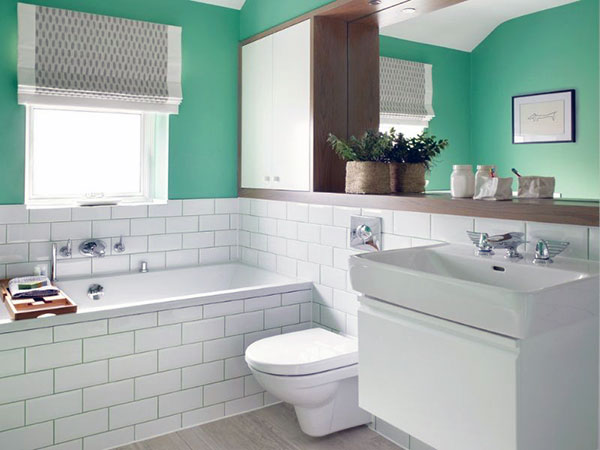
Brown, gray, black are considered undesirable.
Selection of finishing materials
There are special requirements for materials. They should be beautiful, practical, and moisture resistant. This applies to all surfaces.
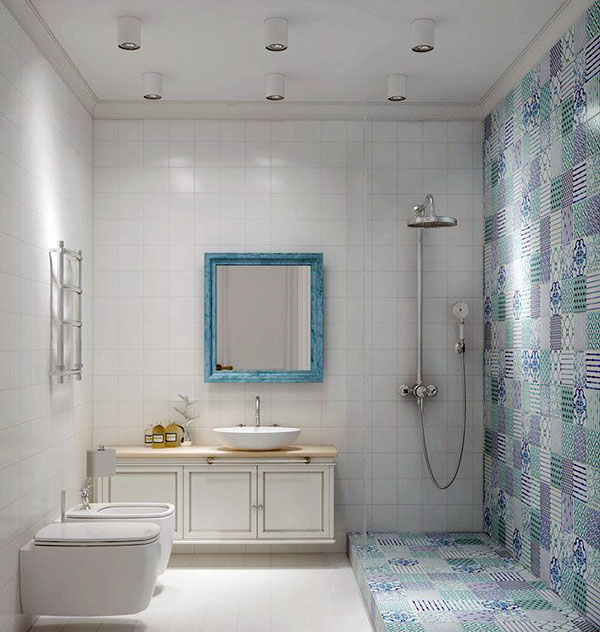
The ceiling can be flat or figured; here it is important to take into account the height of the walls. Suspended structures will steal at least 5 cm from the height. If different coatings are chosen for the walls, floor and ceiling, it is important that they fit organically into the overall interior.
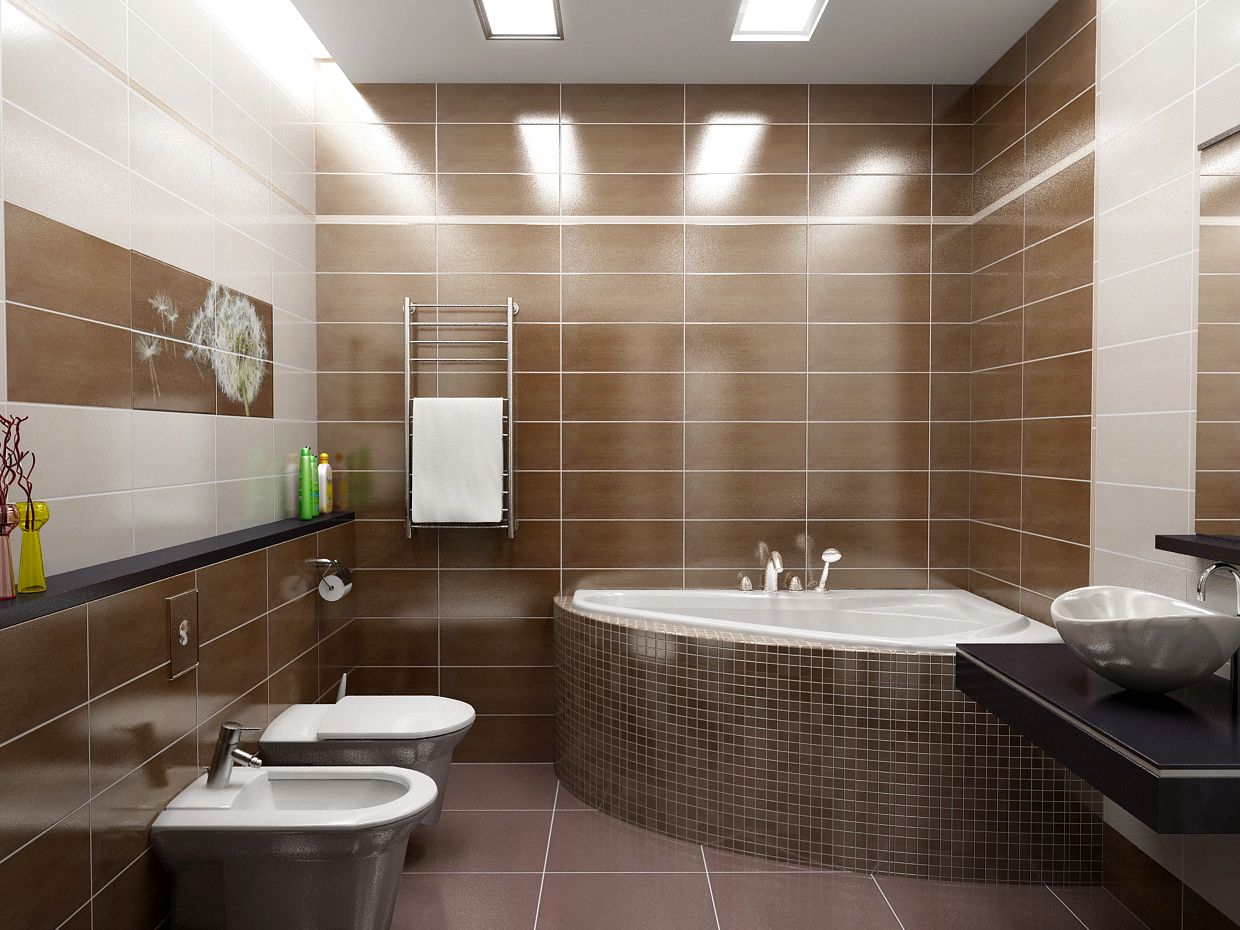
Bathroom design is a creative process, if it is difficult to draw a picture in your imagination, but you want something interesting, you can look at the interiors of combined bathrooms in the photos presented on the Internet. There are many suitable products on the modern market, as they say, for every taste and budget.
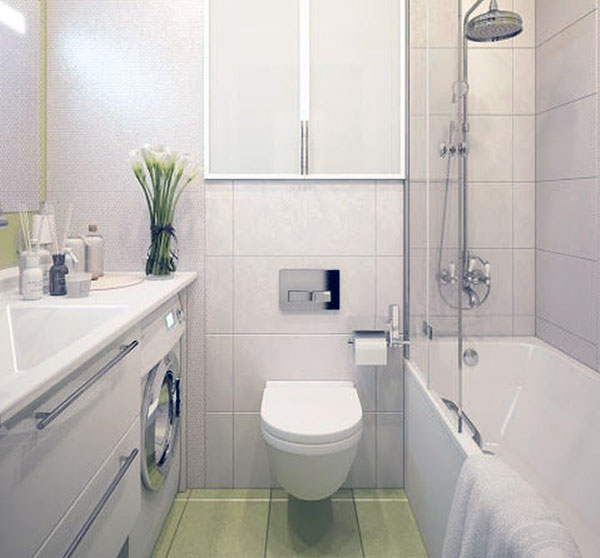
For wall decoration:
- Laying ceramic and glass tiles;
- Painting walls with waterproof paints;
- Pasting with waterproof wallpaper;
- Decorative plasters;
- Plastic panels.
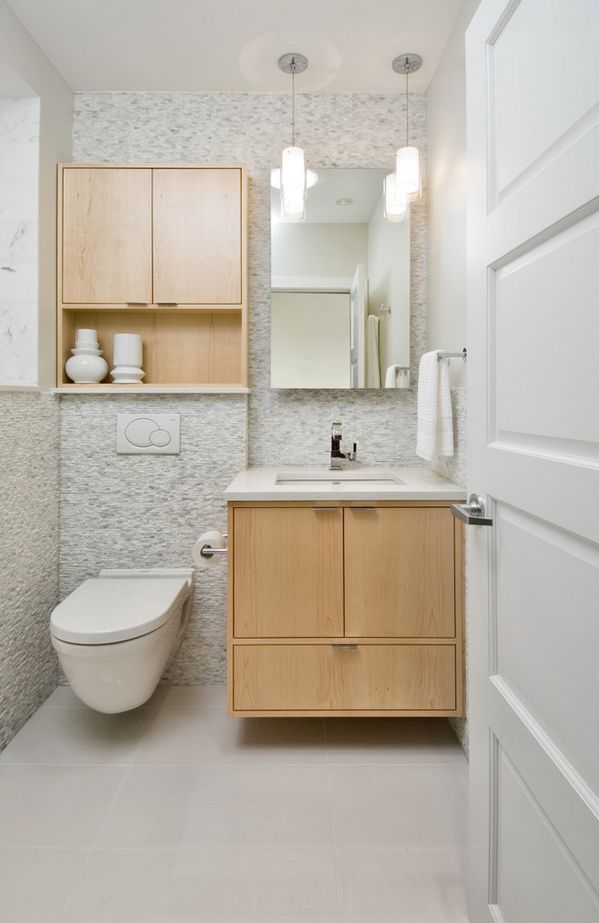
The main finishing material is often combined with natural and artificial stone, pebbles, and mosaics.
For the ceiling:
- Coloring;
- Gluing ceiling tiles;
- Suspended ceiling made of moisture-resistant plasterboard;
- Aluminum suspended panels;
- Plastic panels.
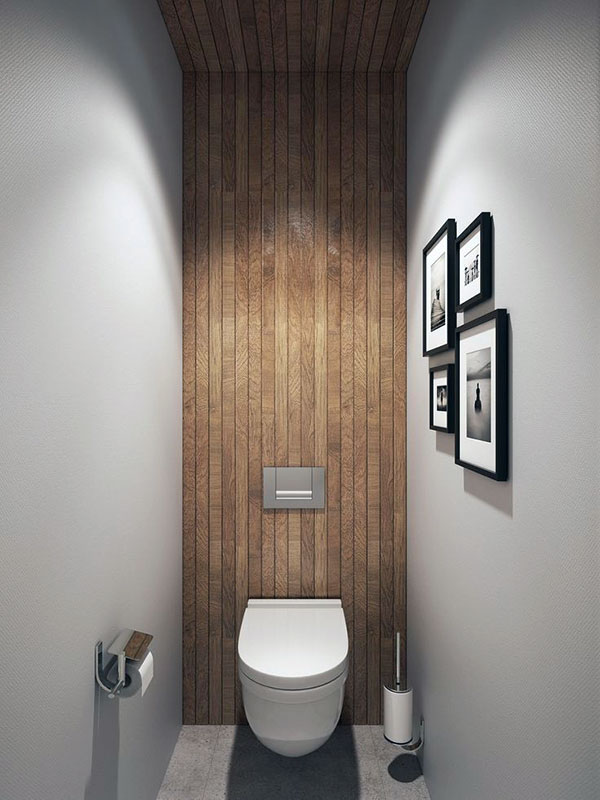
Flooring:
- Ceramic and porcelain tiles;
- Flooring made of natural wood (terrace board);
- Natural cork;
- Waterproof laminate;
- Self-leveling polymer floors.
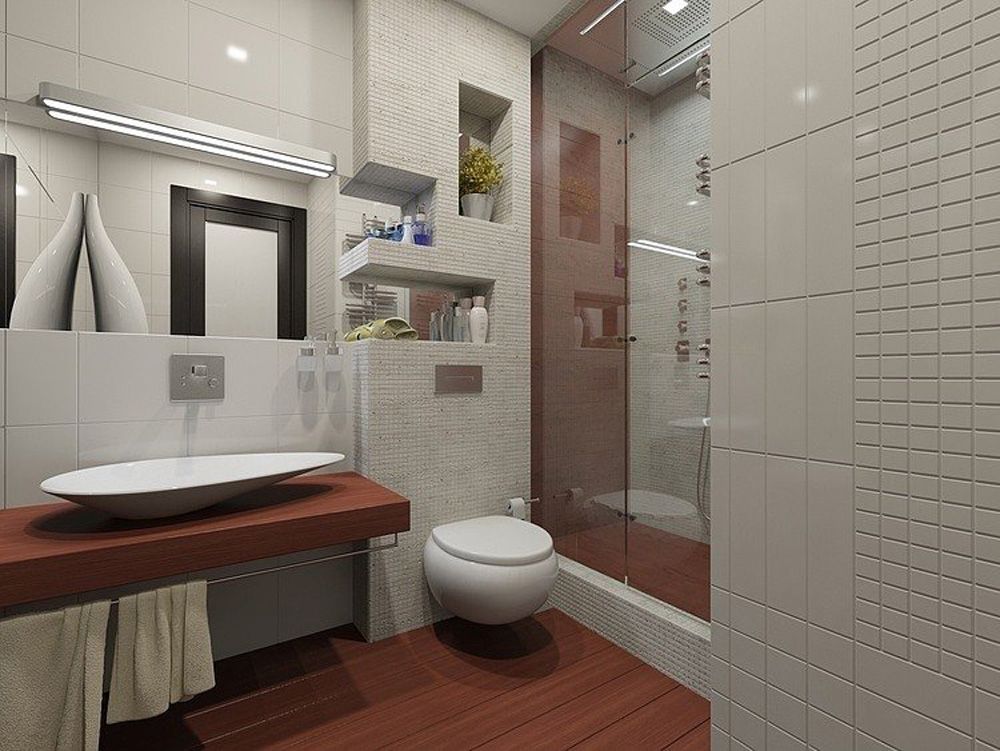
If ceramic tiles were chosen to decorate the room, you can perform the layout using special computer programs. In addition to visualization, they help to correctly calculate the amount of finishing and consumable materials.
How to properly organize lighting
Lighting is important and many people underestimate it. Properly selected and positioned lamps will provide normal illumination, make the bathroom interior more comfortable, emphasize the chosen style, help hide or highlight individual elements, and visually enlarge or reduce the space.
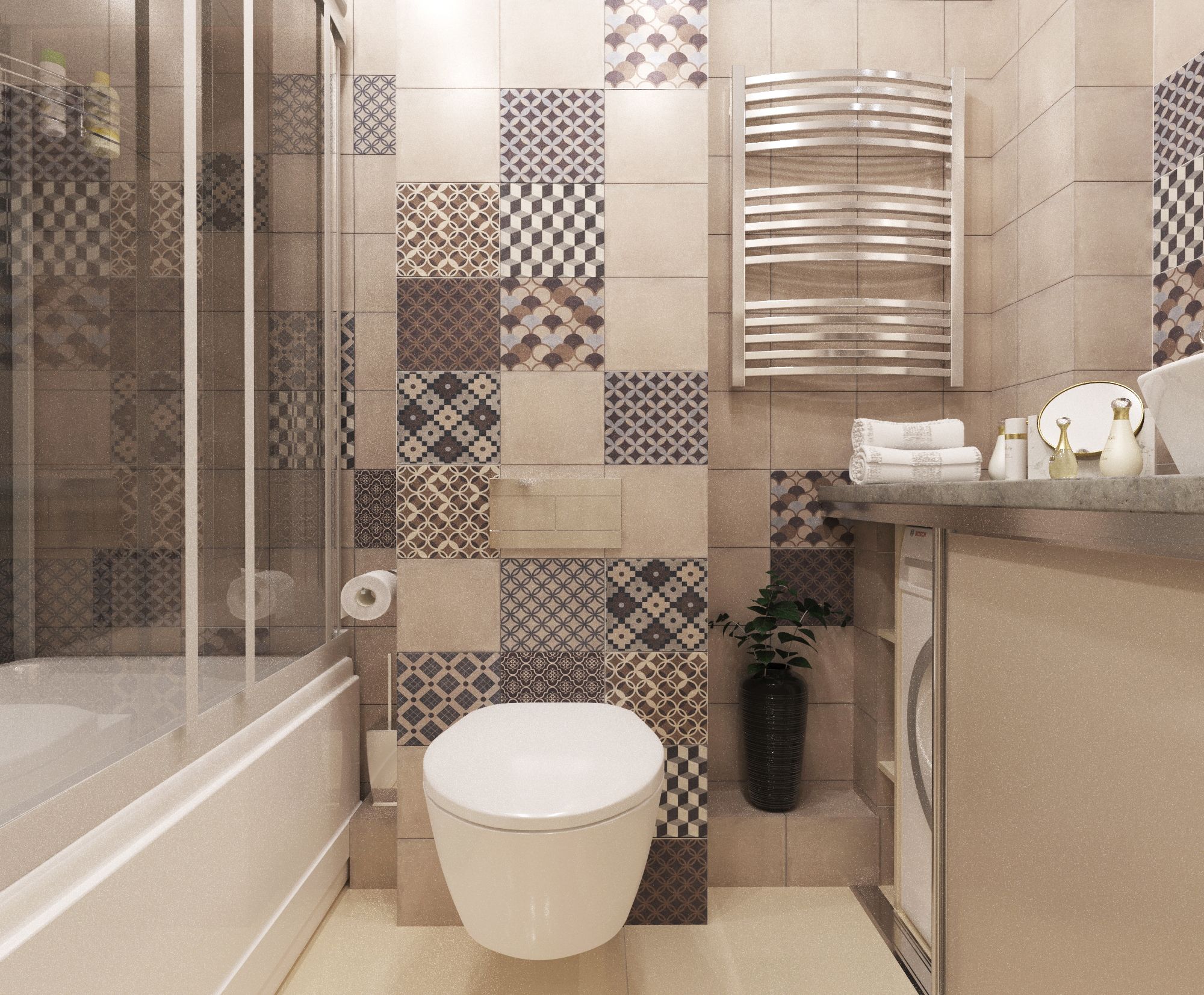
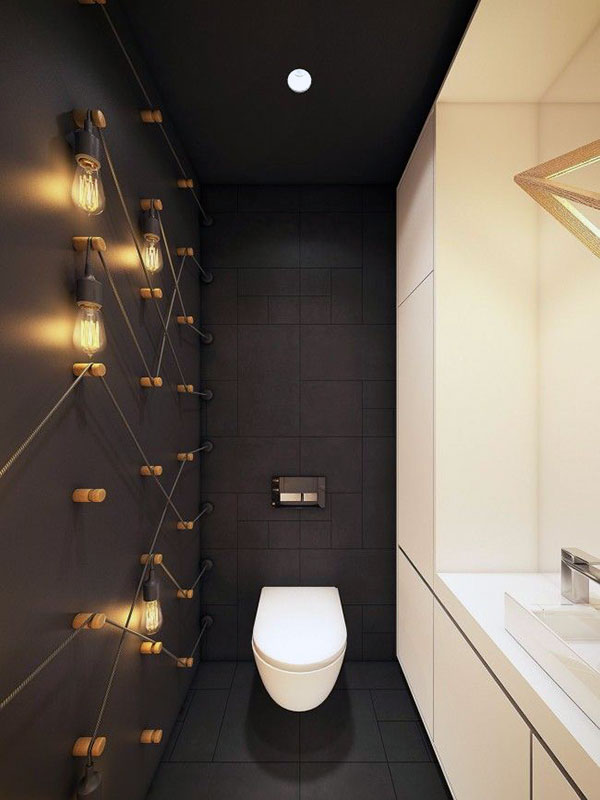
An original modern solution is to illuminate different zones with colored lighting, as well as highlight individual parts with LED strip.
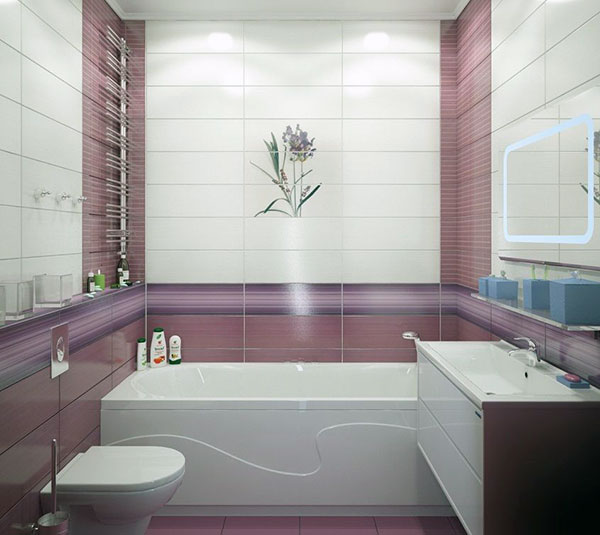
Lighting Tips:
- Ideally, each functional area should have its own lighting in the form of one or more lamps;
- A direct beam of light should not be reflected in the mirror;
- The design of a small bathroom always involves bright lighting; it helps to visually enlarge the room;
- The luminous flux power regulator will help organize the necessary mood;
- It is undesirable to use cold spectrum fluorescent lamps (5000-7000K), they do not contribute to the creation of comfort.
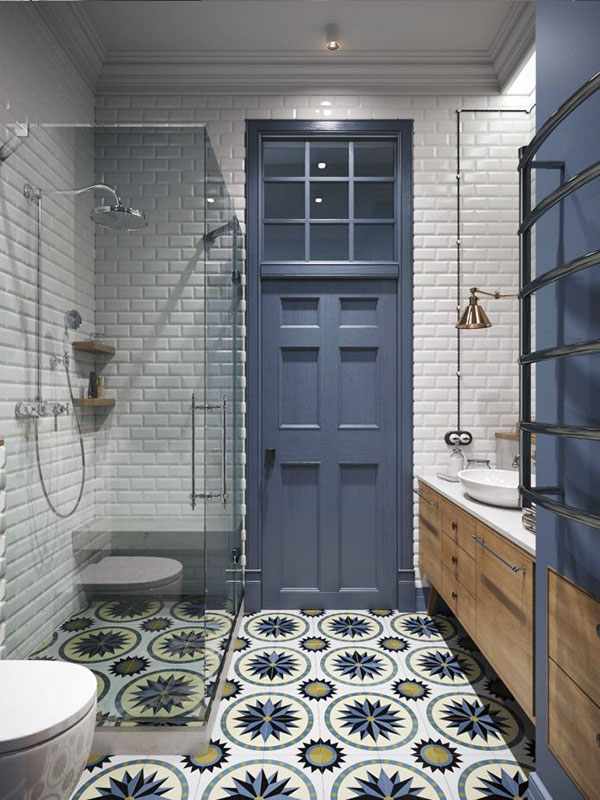
Meaning and location
The mirror is chosen in accordance with the overall concept and style. If squares predominate, it should have pointed corners; in an interior with smooth lines, oval or round looks better. According to the installation method, mirrors are divided into built-in (recessed into the finish), wall-mounted in a frame and floor-mounted; in addition, the mirror can be the facade of a wall cabinet.
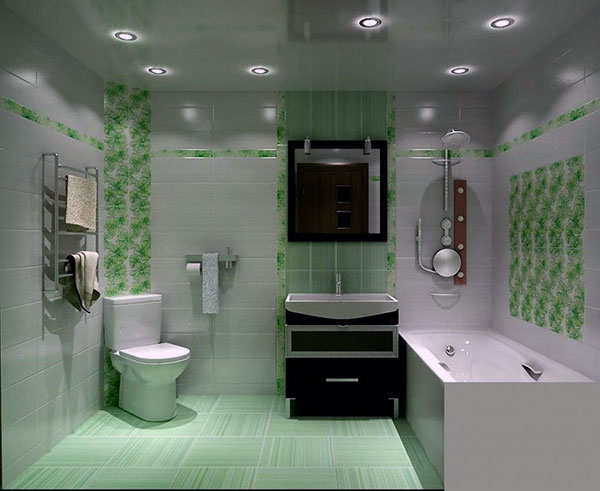
Very often, the design of a combined bathroom in a modern style is emphasized with mirrors with neon lighting, but it does not carry a functional load and is just a decor that quickly gets boring. Reflective surfaces visually enlarge the room, but in excess they can be uncomfortable.
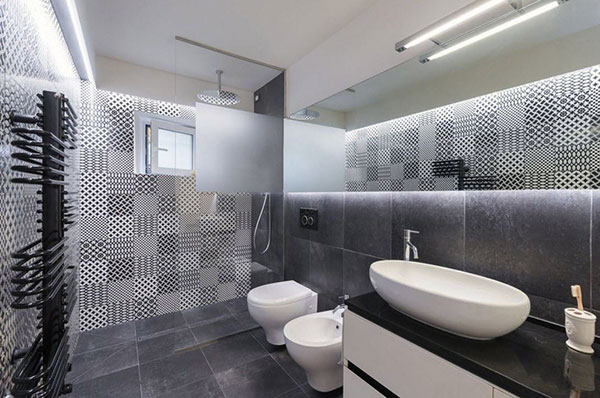
Main areas of mirror location:
- Above the washbasin;
- On one less than two adjacent walls above the bathtub;
- Interior of the front door;
- Rear wall of the niche;
- In large rooms, floor mirrors the size of a person are installed.
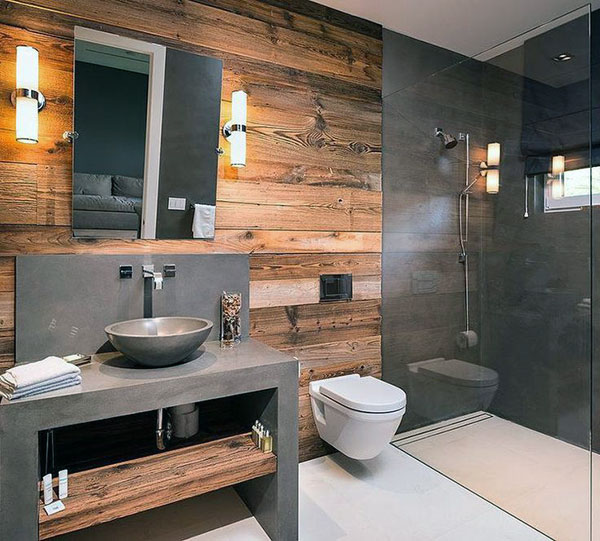
Windows and false windows
It so happened that the design of a bathroom with a window is rare for us. Except that apartments often have a small window into the kitchen. There is so little light from this “window” that the opening is usually sewn up. Alternatively, instead of it, you can insert a stained glass window, a painting, or convert it into a niche.
![]()
Spacious rooms in private houses may well have a window opening of any shape and size. This solution has many advantages: natural lighting, additional ventilation, visual increase in space, aesthetics. If the perspective view from the window is not satisfactory, you can limit yourself to a false window. It can also be equipped with a wide window sill with a cutout for a washbasin, decorated with roller blinds and cute textile curtains. And if you put moisture-loving plants on the windowsill, the restroom will turn into a real green oasis.
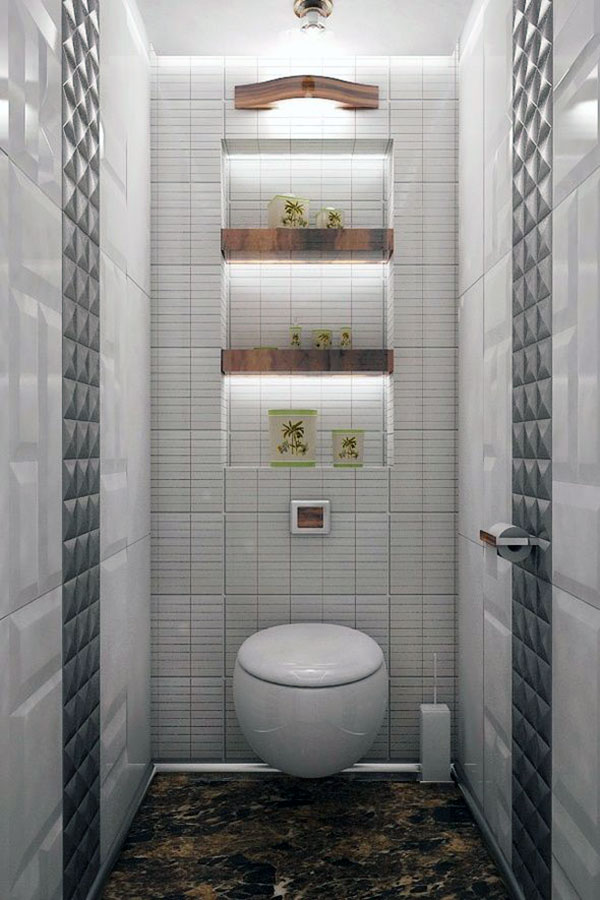
Non-standard solutions and techniques
Modern technologies and an abundance of finishing make it possible to embody the most original architectural ideas even in the bathroom and complement the interior of the bathroom with innovative elements. Perhaps one of these ideas will appeal to you too.
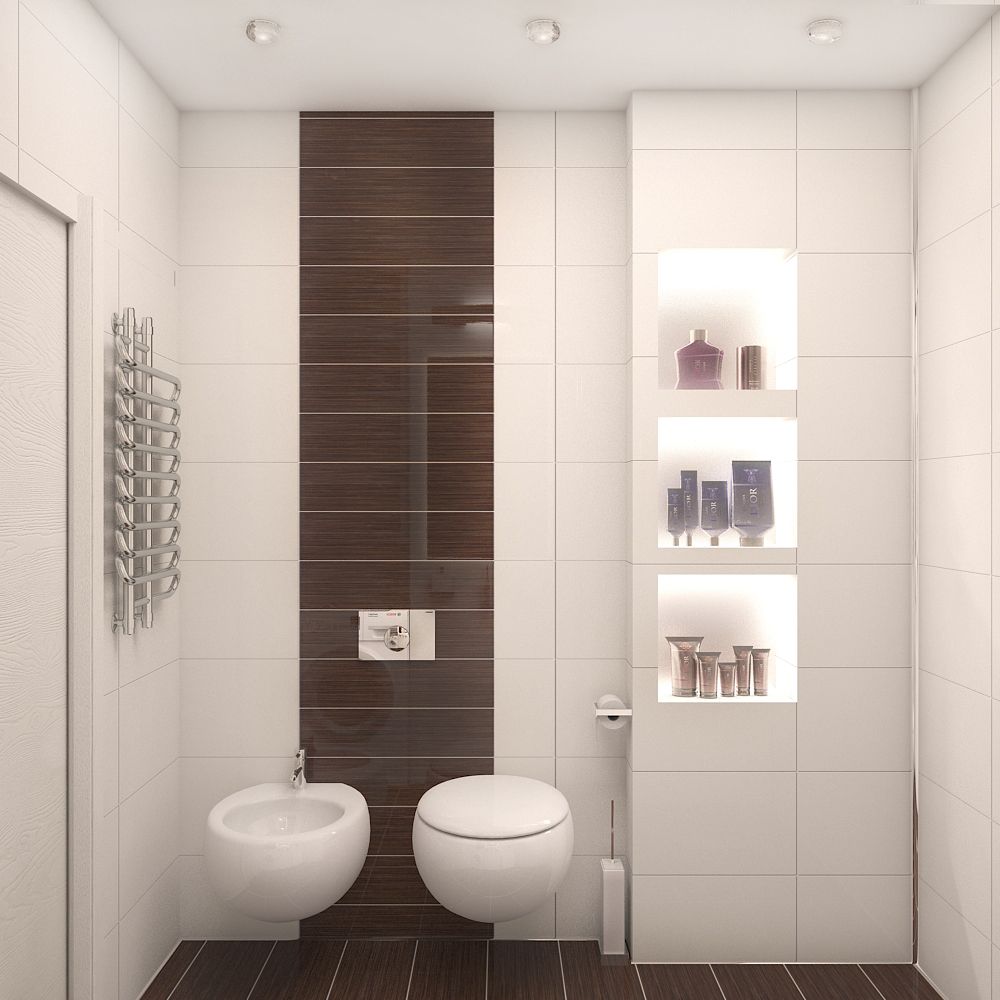
Bathroom design – a bathroom in trouble
- The podium can already be considered a classic technique. It helps to create unusual curves, lines, and baths.
- A built-in shower cabin is a rational and beautiful solution from which the interior of a combined bathroom of any size will only benefit. The absence of a pallet opens up new possibilities for organizing space. In addition, such showers look stylish and modern.
- Fireplaces - this original, non-standard solution became possible with the advent of biofireplaces. The new product runs on environmentally friendly fuel, does not require a chimney, and the combustion process produces no more carbon dioxide than from a candle. Most often, such fireplaces are built into walls.
- Partitions in the design of shared bathrooms usually play a decorative role, while blocking a separate functional area.
- Niches are rare, since their arrangement involves reducing the volume of the room.
- The installation of plasterboard boxes is usually caused by the need to hide communications that were forgotten or could not be hidden in the walls at the initial stages of repair.
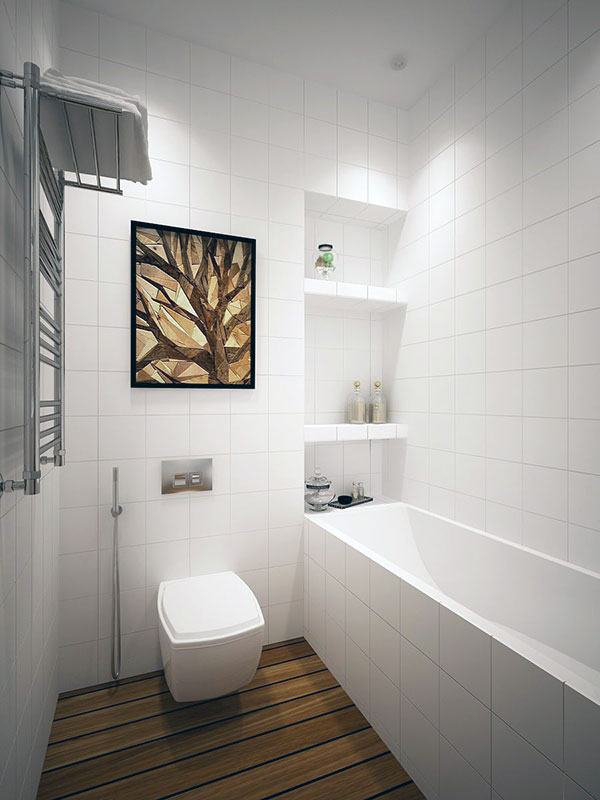
The design of a combined bathroom, large or small, is quite a complex, painstaking job in which a huge number of nuances need to be taken into account. Take your time, before trying to recreate a picture from the Internet, think about whether it fully meets your requirements.
If you find an error, please highlight a piece of text and click Ctrl+Enter.



